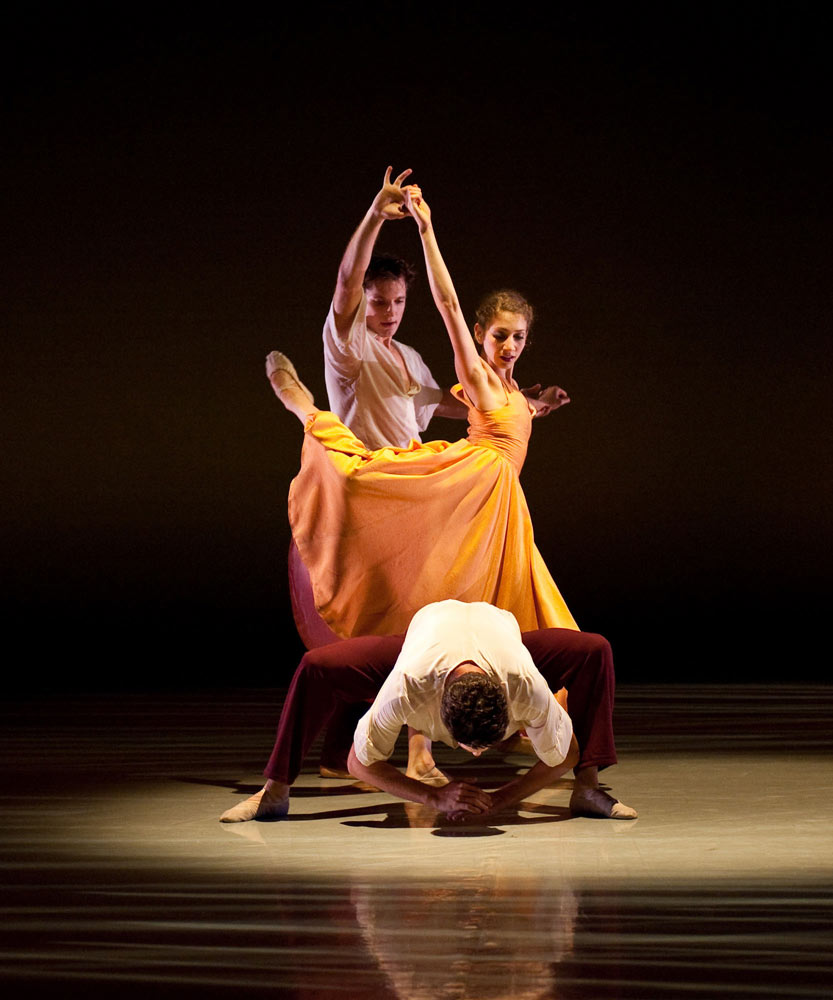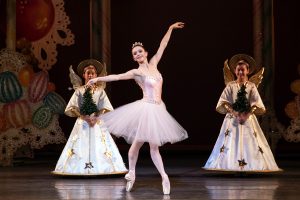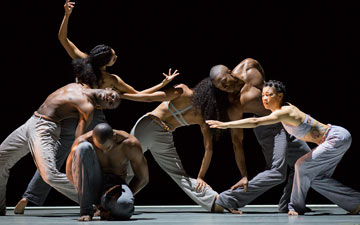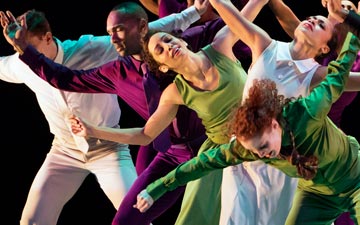
© Blaine Truitt Covert. (Click image for larger version)
Ballet Across America III
The Richmond Ballet: Ershter Vals
Oregon Ballet Theater: Almost Mozart
Boston Ballet: Symphony in Three Movements
Washington, Kennedy Center Opera House
4 June 2013
www.kennedy-center.org
www.richmondballet.com
www.obt.org
www.bostonballet.org
This year brings the third instalment of Ballet Across America, a festival that showcases American regional ballet and gives an opportunity for the dancers of nine regional companies to perform on the main stage of the Kennedy Center. It’s a celebration of American ballet from coast to coast and a vivid snapshot of its diversity of style and repertory.
The nine companies who received an invitation to participate this year were The Richmond Ballet, Oregon Ballet Theater, Boston Ballet, The Sarasota Ballet, The Washington Ballet, Pennsylvania Ballet, North Carolina Dance Theater, Ballet Austin, and Dance Theater of Harlem. Each troupe presented a dance in one of the three programs.
The Richmond Ballet, the State Ballet of Virginia, opened the first program with Ershter Vals (First Waltz), a lyrical and folk-infused ensemble piece choreographed by the Chinese-born Ma Cong, who is currently resident choreographer of Tulsa Ballet. Cong recently retired as a performer (he was a principal dancer with Tulsa Ballet, joining the company in 1999) to open a new chapter in his career as a full-time dance-maker.
Ershter Vals was inspired by the World War II cinema and by klezmer, a Jewish traditional music rooted in Eastern European and Mediterranean musical folklore. The ballet takes its name from one of the four songs by the Italian klezmer group KlezRoym, to which it is set. The soulful soundtrack (KlezRoym’s lead singer Eva Cone infuses each song with beautiful, poetic emotion, which often veers off into sadness) provides a rich background for the dance, which brings four couples onstage and sets them into a nearly perpetual motion. Despite its title, for the most part both the choreography and the music evoke folk dances, occasionally tinged with a spirit of tango. Only in the last section, with the sounds of the eponymous Ershter Vals, do the couples scatter around the stage in a fervent whirl.

© Sarah Ferguson. (Click image for larger version)
Cong’s choreography has a fine angular fluidity and dynamic sweep that seem to carry the piece. As such, Ershter Vals offers some memorable moments. The intriguing opening scene is particularly effective, with the couples facing each other in a long motionless pause: the men crouching on the floor as if getting ready to spring, the women leaning forward, their arms extended in front of them, their fists tightly clenched. As the ballet unfurls, however, the choreography becomes repetitive and eventually loses momentum, the emotional intensity established in the beginning slowly fading away, never reaching its climax.
On opening night, the octet of barefoot yet handsomely-dressed dancers (the women in long dresses of orange, pink and peach, the men in white shirts and burgundy pants) swirled onstage with remarkable skill and ease, their movements etched and thoughtfully rendered. They danced with great communal spirit and utter abandon as if being continuously inspired by the ballet’s evocative music. (As much as I admired the dancing, I thought this ballet was an odd choice to open the festival.)
The dancers of the Oregon Ballet Theater took center stage next for their second appearance at the Kennedy Center Opera House. The troupe from Portland made a memorable impression at the inaugural Ballet Across America festival in 2008, performing Christopher Wheeldon’s RUSH.
Almost Mozart is the title of the piece the company brought to the festival this time. It was made for the OBT in 2006 by James Kudelka, former artistic director of the National Ballet of Canada. According to the choreographer (and the program notes), this ballet is “completely experimental.” Here, sad to say, Kudelka experiments not only with movements but also with the music.

© Blaine Truitt Covert. (Click image for larger version)
Adagio from Mozart’s Concerto No. 23 in A Major (1786) is perhaps one of the most sublime and sensual pieces of music for piano and orchestra that has ever been written. It is “Baroque meets Romanticism” and it is Mozart at his most heavenly beautiful. Kudelka, however, decided that this music was in need of a considerable alteration, so he removed the piano part and cut the orchestration into pieces. (Perhaps that’s why the word “almost” is in the ballet’s title. It’s Mozart abridged and disfigured.)
In the beginning, the orchestra plays short fragments of the warped piano concerto, but for most of the time, the dancers, arranged in duets and trios, move to the sound of their breathing. The choreography is uniformly stiff and emotionless, yet requires the cast to unleash their inner athletes.
Set to Mozart’s Maurerische Trauermusik the central pas de deux, expertly danced by Grace Shibley and Brett Bauer, proved the most compelling part of the dance. The heartrending elegiac music, played in its entirety by the Opera House orchestra under the baton of Niel DePonte, ultimately gave the ballet its needed expression and emotional core.
The masterwork of the program and the evening’s high point was the Boston Ballet’s presentation of George Balanchine’s Symphony in Three Movements. An enduring tribute to Igor Stravinsky, the work was choreographed to the composer’s propulsive, jazz-infused score and was premiered at the 1972 Stravinsky festival by the New York City Ballet.

© Rosalie O’Connor. (Click image for larger version)
The audience exploded with enthusiastic cheer and applause just by looking at the opening long diagonal of 16 ballerinas in white leotards, their hair fashionably gathered in high pony tails. (The image of this clean pure line is truly striking in its perfection and simplicity.)
Balanchine’s keen understanding and love of Stravinsky’s music allowed him to reveal in the ballet’s movements the heart and emotional meaning of the music itself. In Symphony in Three Movements the choreography is full of the angular inflections of classical ballet technique and abrupt changes in directions and patterns which spring from subtle shifts in the intricate structure and texture of the music. Here the mesmerizing geometric formations for the mighty corps de ballet and the interplay between the ensemble and the soloists not only provide a source of endless fascination and awe but also intensify and enhance the appreciation of Stravinsky’s music.
The dancers of the Boston Ballet infused the invigorating and incredibly complex choreography with special radiance and zest. Among the soloists, the lanky Lasha Khozashvili – a former dancer of the State Ballet of Georgia who joined the Boston company in 2010 as a principal – particularly stood out for his technical virtuosity and flawless style.

















You must be logged in to post a comment.